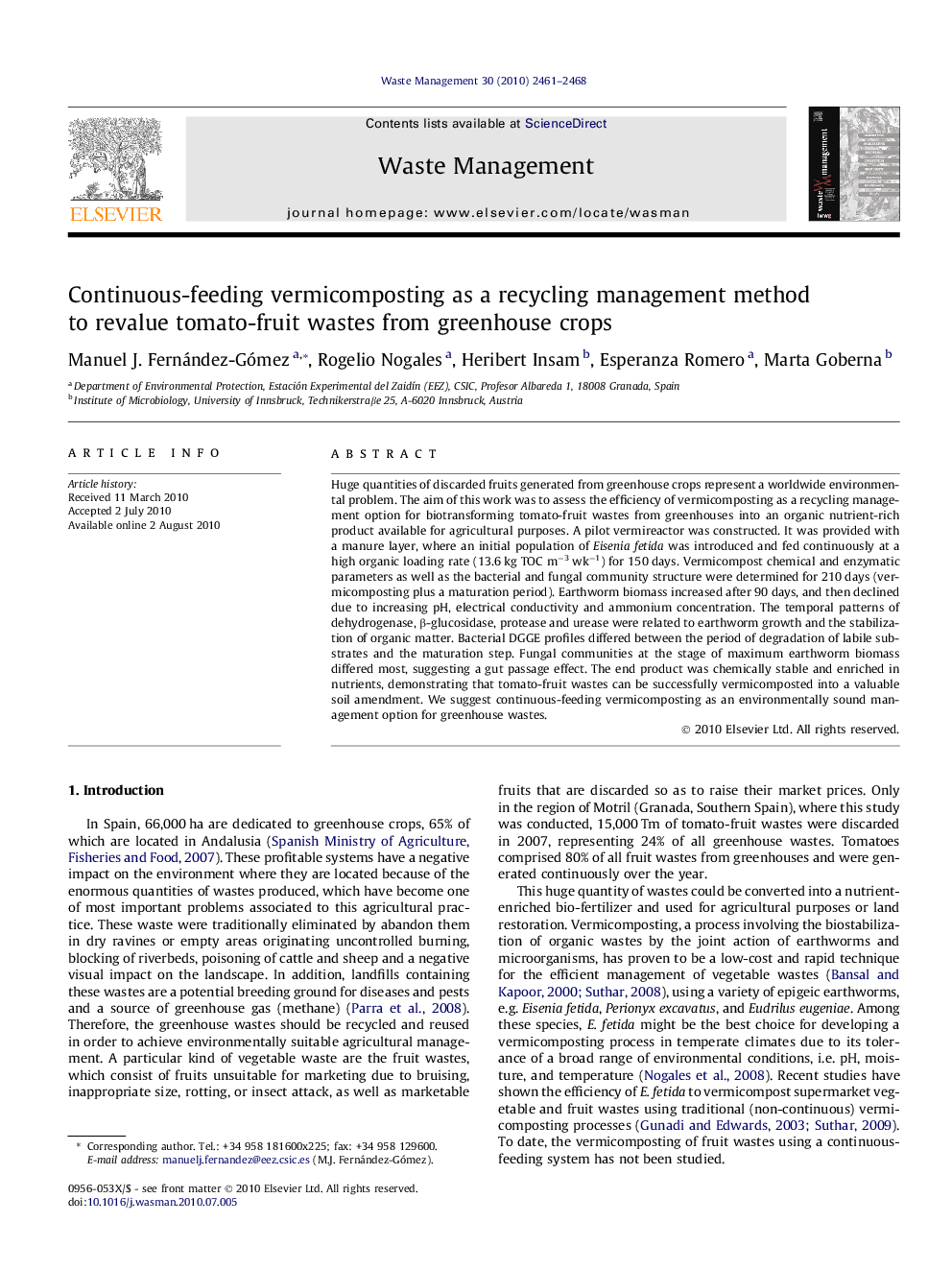| Article ID | Journal | Published Year | Pages | File Type |
|---|---|---|---|---|
| 4472562 | Waste Management | 2010 | 8 Pages |
Abstract
Huge quantities of discarded fruits generated from greenhouse crops represent a worldwide environmental problem. The aim of this work was to assess the efficiency of vermicomposting as a recycling management option for biotransforming tomato-fruit wastes from greenhouses into an organic nutrient-rich product available for agricultural purposes. A pilot vermireactor was constructed. It was provided with a manure layer, where an initial population of Eisenia fetida was introduced and fed continuously at a high organic loading rate (13.6 kg TOC mâ3 wkâ1) for 150 days. Vermicompost chemical and enzymatic parameters as well as the bacterial and fungal community structure were determined for 210 days (vermicomposting plus a maturation period). Earthworm biomass increased after 90 days, and then declined due to increasing pH, electrical conductivity and ammonium concentration. The temporal patterns of dehydrogenase, β-glucosidase, protease and urease were related to earthworm growth and the stabilization of organic matter. Bacterial DGGE profiles differed between the period of degradation of labile substrates and the maturation step. Fungal communities at the stage of maximum earthworm biomass differed most, suggesting a gut passage effect. The end product was chemically stable and enriched in nutrients, demonstrating that tomato-fruit wastes can be successfully vermicomposted into a valuable soil amendment. We suggest continuous-feeding vermicomposting as an environmentally sound management option for greenhouse wastes.
Related Topics
Physical Sciences and Engineering
Earth and Planetary Sciences
Geotechnical Engineering and Engineering Geology
Authors
Manuel J. Fernández-Gómez, Rogelio Nogales, Heribert Insam, Esperanza Romero, Marta Goberna,
